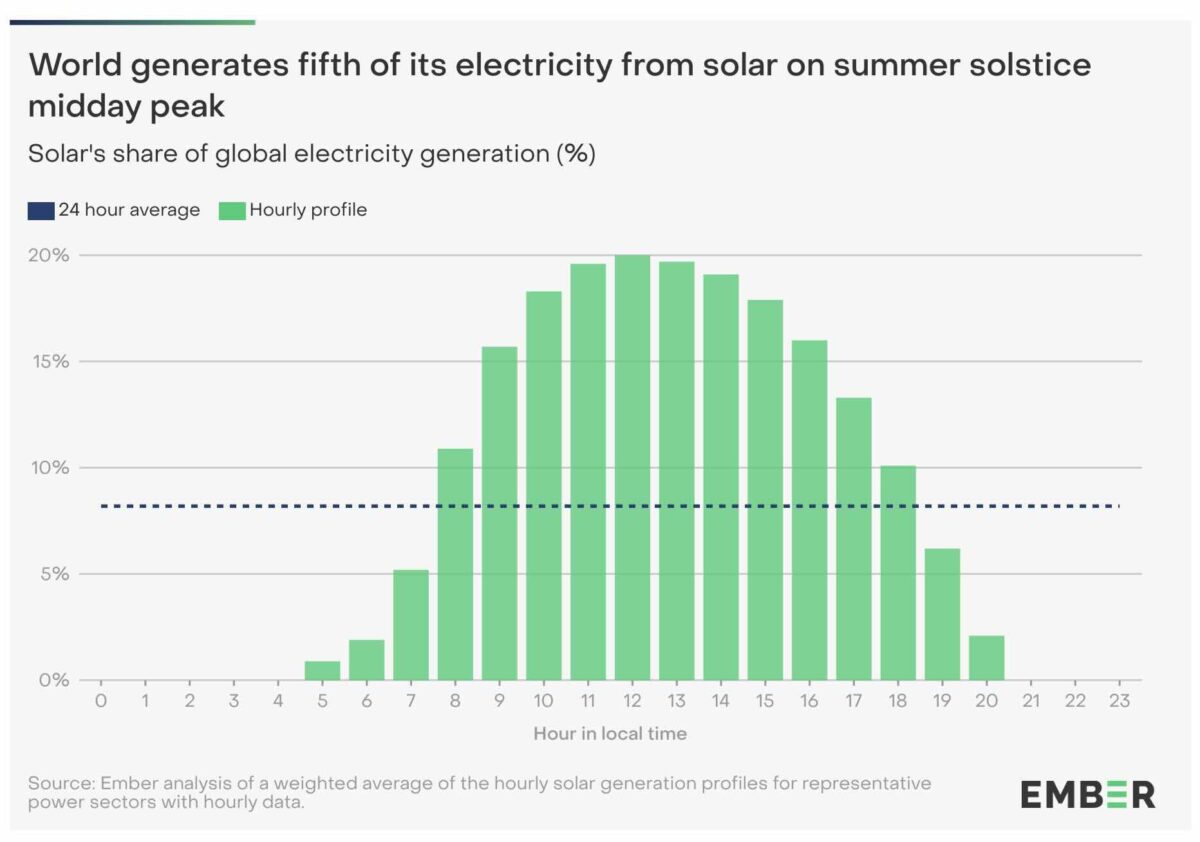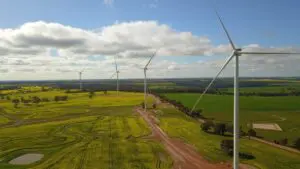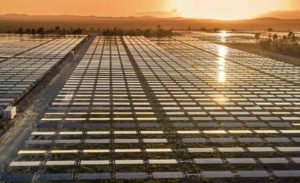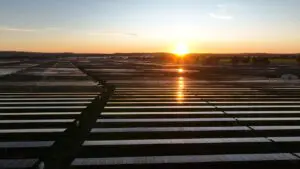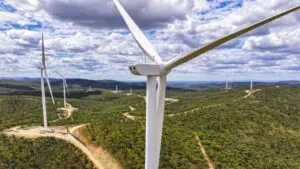Friday is expected to be a landmark day for solar power, the fastest growing energy source in the world, and the one that is expected to dominate global power systems in the decades to come.
Energy think tank Ember estimates that at noon on Friday – the summer solstice in the north hemisphere – solar will account for a record one fifth of all electricity demand. On the same day last year it was 16 per cent.
For the 24 hour average, Ember forecasts that solar will provide 8.2 per cent of global electricity generation on the day, and about 8.7 per cent for the whole month.
“At a 20 per cent share, solar is now a serious global electricity source,” says Kostantsa Rangelova, an electricity analyst at Ember.
“Battery costs have collapsed, meaning solar power is already being used in the evening, not just in the daytime. Solar power is the fastest growing source of electricity and will undoubtedly rise to become the biggest source of electricity, and ultimately of energy.”
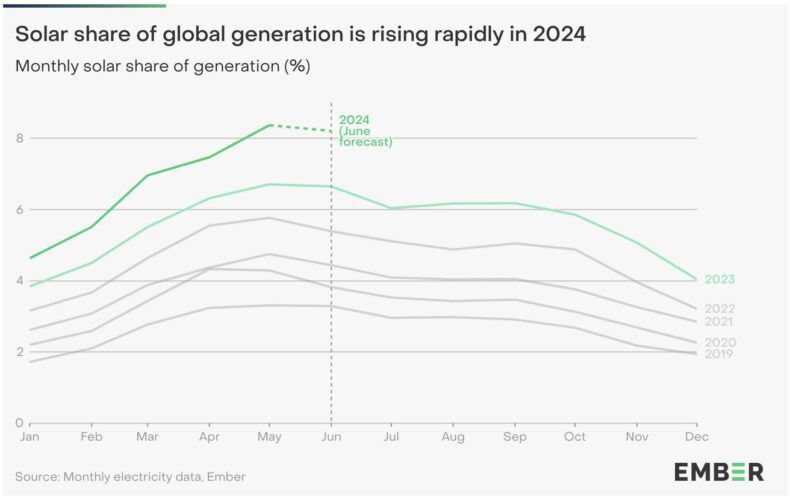
According to a new Ember study, there are now 34 economies that generated more than 10% of their electricity from solar in 2023.
In the EU, the solar share across June is expected to be more than double the global average at 20%, up from 17% in June 2023, with Spain having a solar share of around 30 per cent. On average, for the entire year 2023, the EU’s solar share was 9.2%.
Australia’s solar share in June has been 13.8 per cent, according to OpenNEM. In December it was 23.6 per cent. Over the whole of 2023 it was just under 18 per cent, and has been averaging 19.4 per cent so far this year.
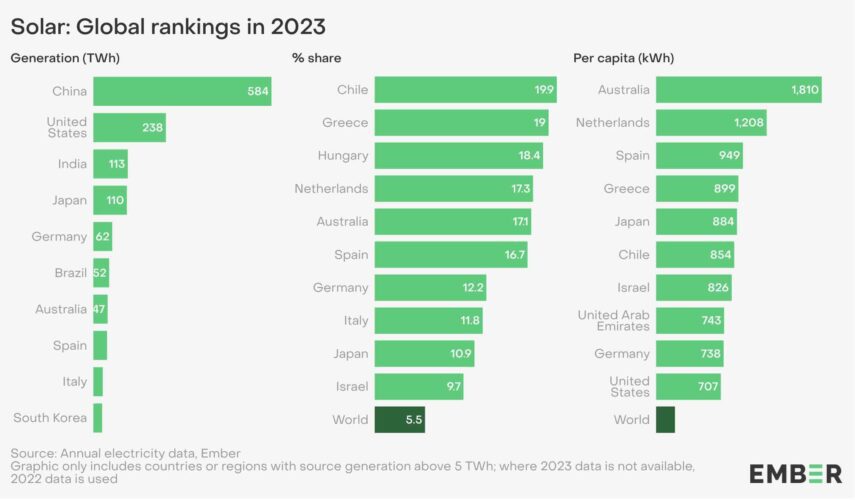
Ember notes that Australia still leads in per capita solar production, with a 2023 average of 1,810 kilowatt hours (kWh) per person in 2023 – nearly double that of Spain. Australia ranked fifth in the world in solar market share on the grid in 2023, and seventh in the world in total output (47 terawatt hours, or less than one tenth that of China).
Of the world’s biggest electricity markets, the US and India are expected to have a similar solar share in June 2024 at 6.9% and 7.1% respectively, while China – although by far the biggest installer of solar panels – will have a solar energy share of around 9.4 per cent for the month of June. It averaged 6.2 per cent over 2023.
The Ember report notes that solar has been the fastest-growing source of electricity generation for the 19th year in a row, and in 2023 more than 2 million solar panels were installed on average every day, up from just over 1 million in 2022.
I

